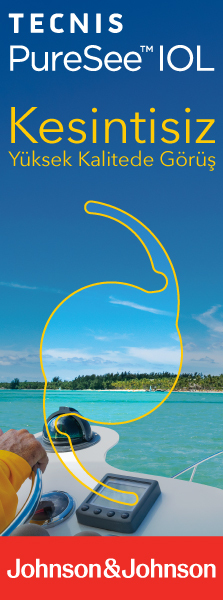2M.D. Asistant Professor, Kafkas University Faculty of Medicine, Department of Neurology, Kars/TURKEY
3M.D., Erzurum Training and Research Hospital, Eye Clinic, Erzurum/TURKEY
4M.D., Sarikamis Military Hospital, Eye Clinic, Kars/TURKEY
5M.D. Asistant Professor, Kafkas University Faculty of Medicine, Department of Ophthalmology, Kars/TURKEY Purpose: The aim of this study is to compare the topical, retrobulbar and subtenon anesthesia techniques in patients undergoing phacoemulsification surgery.
Materials and Methods: In this study, one hundred and thirty eyes of 130 (63 Female, 67 Male) cataract patients were divided into topical anesthesia, retrobulbar anesthesia and subtenon anesthesia group. Ocular complications due to the anesthesia technique, the degree of limitation of perioperative ocular movements and postoperative pain using a visual analogue pain scale.
Results: In the topical anesthesia group 2 patients continued to have capsulorexis problem and 1 patient had vitreous loss due to posterior capsule rent. In the retrobulbar anesthesia group, retrobulbar hemorrhage was observed in 1 patient, and palpebral subcutaneous hemorrhage in 8 patients. In the subtenon anesthesia group, subconjunctival hemorrhage was observed in 28 patients and chemosis in 3 patients. The ocular movement limitation scores in the topical anesthesia, retrobulbar anesthesia and subtenon anesthesia groups were 8.00±0.00, 3.18±1.32 and 4.88±1.26 respectively. This results were found to be statistically significant. When pain scores of the goups were compared, a statistically significant low score was found at the end of the surgery in the subtenon anesthesia group and at the 4th hour in the retrobulbar anesthesia group; no significant differences were found among groups at the 2nd and 24th hours.
Conclusion: This study shows that subtenon anesthesia is a good alternative to retrobulbar and topical anesthesia in patients undergoing phacoemulsification surgery; by providing fewer ocular complications.
Keywords : Phacoemulsification surgery, topical anesthesia, retrobulbar anesthesia, subtenon anesthesia




